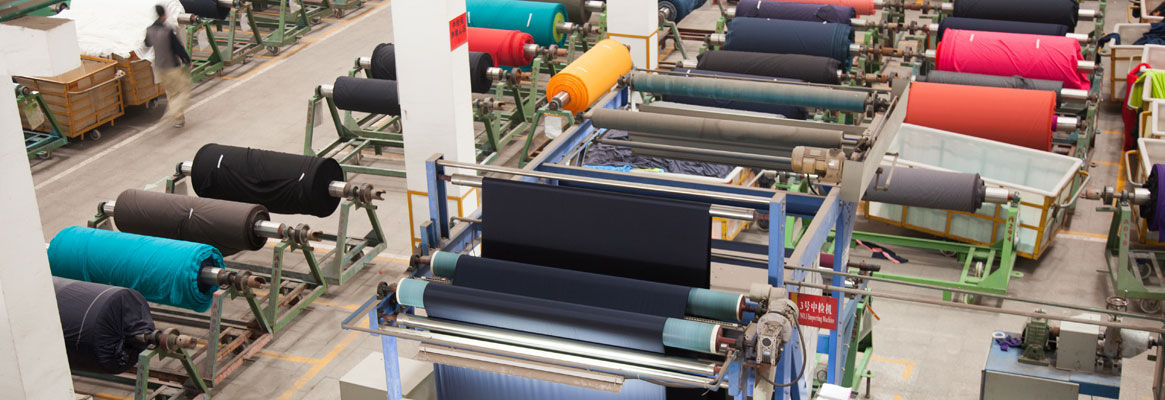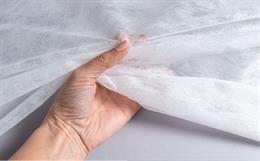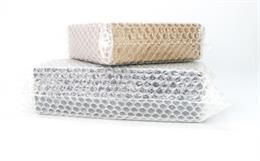Backdrop
It is billed as the next biggest opportunity emerging in India. Estimates range from Rs. 6000 crores to Rs.80000 Crores by year 2015. Without gettinginto a debate of how accurate these estimates are, it is fair to say that India has the potential to feed this number on its own. The government believes so and hasinstituted various measures such as National Mission on Technical Textiles toestablish Indias presence in this sector. The beautiful part is, one need nothave to look outside the country for business as IT had to do. There is acorrelation between Prosperity and Consumption of Technical Textiles aswitnessed in the US and Europe. This is precisely what is happening with Indias steady growth in recent years. It is little wonder that the US and Europe should look at India as the market to enter as they reckon that China and India will dominate this sector with a whopping 45% of the global business within the next10 years.
There are two backdrops that have a direct bearing on thegrowth and development of Technical Textiles in India.
- Absence of an Evolved Eco System
- Absence of a mechanism that would allow for easy entry of SMEs into this segment
The first back drop is the absence of a technical textile ecosystem. It is not as evolved as the Tirupur Eco System that supports theKnitting Industry. The technical Textiles eco system may take time to evolveand consolidate because it is
- Capital Intensive
- Knowledge Intensive
- Skill Intensive
- Innovation Intensive
Innovation is an outcome of Capital, Knowledge and Skill andunless the grades of CKS are really high the question of Innovation will neverarise and unless Innovation is possible, the Eco System is as good as dudapparatus. To explain it in a simple language, One may want to argue thatTechnical Textiles too does substantial business but what one has to bear inmind is that of the 10 bn dollar worth of business it does, 50% is importedlargely in finished goods form with the rest in component or rolled goods formthat are converted and assembled in India, with the rest of the domestic production, barring few exceptions, is largely confined to very low end commodity type products. To manage assembling and manufacturing low grade products, an eco system that istechnical textile specific is not required, as a matter of fact if the industryfails to go above the business of importing and converting, the question of anEco System forming in India does not arise at all.
The second backdrop is the absence of a mechanism that willenable the SMEs to enter Technical Textiles. It has to be borne in mind thatthe success of Technical Textiles in India will totally and absolutely dependon SMEs entry. Currently we do not have a mechanism that will enable the earlyentrants to make their progress right up the business entrance line. Theawareness programme being conducted by institutions such as CII have generateda large number of prospects who are unable to move to the next stage up thebusiness entrance line for want of an established and reliable mechanism. Hydraand Textiles Committee are currently engaged in an initiative to support theseSMEs to make their next level progress by setting in place such a mechanism.The initial interaction with the SMEs indicates a figure of almost 74% lookingfor specific product and segment details to take decisions. There are about 13%from this group who have made their product decisions and are keen to conducttheir Pre-Project Study to commence implementation. When these groups finallyarrive at the final destination which is commercial operation, there may not bean Eco System to support them.
These two back drops are hence very critical to the successof SME entry into this sector.
The Hydra Resource
Hydra has assembled a resource system to install and operate these two support systems that are crucial to the development and growth of Technical Textiles in India. The salient features about this Hydra Resource base centre around the Technical Consultant Team from Europe. This team will be responsible for transferring the Skill and Knowledge base pertaining to production. This is almost a turn key support from preparation of blue print right up to roll out of product meeting the required standards. This will be an on going process for a while as all products may not roll out at the same time. The European team will also set up a knowledge network that links up with their Knowledge Network System in Europe. Further more, a separate European Team will be involved in managing JV Initiatives with their Indian Hydra counterparts. The other important feature is the Hydra Data Centre, an expert system that will answer many product and project feasibility related questions for the SMEs. A very important partnership is the strategic partnership that is in the process of being inked with Textiles Committee. The partnership has been very fruitful and has speeded up the next level progress for the SMEs in Tirupur cluster.
A closer look would help one understand that this resource base is based on partnerships and alliances such as Textile Committee, DNV, European Knowledge Network, etc. It brings out the need for such partnerships to make it possible for Technical Textiles to take wings in India. The other way of looking at it is, this is the resource base and any SME would need to have the support systems namely the Entrance Mechanism and the Eco System. The cost of supporting such a Resource Base is huge and it thus makes sense for SMEs to form a confederation to share the cost of its role. Larger sized enterprises do manage to create their own captive eco systems to support just their operations but that may seem a tall order for SME enterprises that are cash strapped for investments in support systems however critical they may be to the successful functioning of their business.
The Hydra Confederation
The confederation model uses the principle of Aggregation, Consolidation and Integration. One will see this principle in operation at all levels. Let us use manufacturing technology as an example to see how this principle works.
The Technical Textiles Manufacturing environment is different in many respects in that the numbers of product items a technology sub category such as needle punch or spun lace can produce are more than one. This is the case with other sub categories too. In combination, several sub categories of technologies can produce lot more permutations and combinations than as single stand alone systems. This feature creates a unique situation for a confederation if the manufacturers within its facility have a broader spectrum of manufacturing technologies to offer. In an aggregated, consolidated and integrated environment, with several product possibilities, it becomes possible to generate an Efficient Frontier Curve offering a range of optimalitys for different product permutations and combinations for a given market and financial conditions.
This is a very unique advantage that is possible only in a confederated environment where the configuring of manufacturing capacities is lot more involved than in a dispersed Cluster where there is no visibility to the type of technologies and capacities that exist at any given point in time. Hydra would be enabling this feature with a customized IT solution that would plot the optimality of various product permutations in a dynamic way apart from enabling the entire facility to function like a single integrated capacity using a common Advance Planning and Scheduling system. This advantage allows the Individual entities within a confederation to maximize their margins through efficient use of their resources
One can apply the principle of Aggregation, Consolidation and Integration in other areas too such as rationalization of HR requirement for non competing skills and knowledge, Aggregation, consolidation and Integration of Warehouse requirements of all SMEs and so forth. To take an example, the investments that an individual entity would be required to make during the pre-implementation stage could be anywhere between Rs.10 - 20 lakhs. Quite often, two entities could be spending the same amount to secure the same information. In a confederated environment, the individual requirements are aggregated and consolidated to spend money only once for each of the tasks to be performed. The savings in investment is anywhere between 70% - 85% depending on how much one spends on pre-project surveys and analysis. Such a saving contributes to the de risking of the project in a significant way.
Ground Realities
The starting point for setting up a confederation is conducting a ground reality check by interacting with the interested entities to understand the ground realities.
The Coimbatore Tripper initiative was started in partnership with Textiles Committee. Mr. Dhandapani and Mr. Venugopal took a very active and pioneering interest in introducing technical textiles to the SMEs in Tirupur. It was a full on support with Mr.Venugopal doing the rounds every single day almost on an evangelical scale. This shows how partnerships with different resources, knowledge and skill levels could leverage their individual strengths to take any programme or initiative to higher levels of accomplishment.
The cluster readiness indicates that 72% of the entities are now looking for very specific product and market related information to decide on the next course of action. This would be the case in other clusters too as a request received from a large enterprise in north was seeking a similar support from Hydra. As indicated before, this is a huge gap that could stall the entry of SMEs into Technical Textiles by almost a year if not less. Hydra proposes to cut short the time to almost few minutes by setting up the Data Centre for Technical Textiles Products. This application will offer very specific reports with details of the market, growth, returns, project outlay etc. All critical information that is necessary for taking a no or no go decision. The cluster direction shows that a large number of contract managers are keen to find out if they could use their existing idle capacities for manufacturing technical textiles.
The other interesting point to note is that Medium sized exporters and large brand owners are looking at Technical Textiles as a strategic direction to take. The investments are looking substantial with respect to entities that consider TT as a strategic decision. Though the investments from the contract segment may seem small the resources they propose to bring to table is significant from a production capacity perspective. Notwithstanding what each segment proposes to bring, the investment levels discussed puts the Cluster in the Low - Medium Class Technologies. The confederation would still require several medium sized that are above Rs.25 - Rs.40 crores to introduce a profitable manufacturing environment. There has to be a mix of average investments comprising Rs. 1.5 Crores - Rs. 5 Crores, Rs. 6 Crores - Rs. 15 Crores, Rs.16 - 40 Crores and above Rs.40 crores in the ratio of 20%:40%:30%:10%. The investment, apart from determining the list of products that the cluster can manufacture also leads to the list of raw materials that would be required.
Services - Utilities - Infrastructure
The importance of Services, Utilities and Infrastructure in Hydras I&U design could be seen in the approach Hydra takes in listing the S I & U requirement for a confederation. The Services, Utilities and Infrastructure listing is done on the basis of the definition of economic activities projected to take place. For example, if there are going to be many trucks visiting the facility, then having a truckers rest house becomes a mandatory requirement. . The Services, Utilities and Infrastructural requirements are thus not treated as frill elements but as part of a total economic plan for the facility. The confederations UTILITIES AND INFRASTRUCTURE will use a combination of a) shared Cost b) use and pay and c) Third Party Service Charge to keep the costs and investments low for all beneficiaries
The rule is
- All I&U used by 3rd party Services will be given to those entities on lease
- All U&I offered on a shared cost basis will be owned by the confederation
- All U & I offered on a Use and Pay basis will be owned by the confederation / 3rd Party Provider of those utilities
The services included in the Hydra Confederation SUI design comprise 3 PL, JV Services, Funding, Business Entrance Services comprising Business Potential Analysis and Pre-Project Studies. Implementation comes under the Eco System delivery mechanisms as they are core to the technologies, skills and knowledge to be transferred and made operational. . Each of the service topics listed in the SUI design in vast in content and would require a separate submission.
JV Services
A salient service feature that offers the Confederation approach an edge over other models is the JV service that Hydra resource centre has in place in collaboration with its European Technical Team. This desk will keep the JV list dynamic for both sides. A dedicated team with exposures to conducting due diligence will be part of the JV Management team. The JV services will increase in scope as Europe begins to move JV to the next level that would involve shifting of production of price sensitive and basic products to India to take advantage of the low cost environment. Hydra anticipates this to happen within the next 2 - 3 years. There is already a keen interest in JV options with not less than 27 expressions of interest placed with the European desk. Out of this list 3 companies are visiting Delhi to scout for JV partners. Interested entities may write to HYDRA with details of their company, the sector they are interested in and the scale of investment they can bring to table.
Energy Security
The topic of Energy security is being discussed as a subject beyond providing uninterrupted power through captive generation. The global scenario in energy production and distribution is changing with many old equations that kept price lines stables rapidly disappearing and being replaced by new commitments and global equations. The possibility of a stable price environment existing in future is not a probable one with new drivers such climate security based legislations, incentives, competition for energy, peak oil production, disputes and so forth coming to the picture. Long term business viability and profitability would thus rest on a clear strategy on Energy Security Plans.
Ecologically Sustainable Design
Economic gains cannot be at the cost of Environment and Society. Environment - Society - Economics are now being seen as the 3 pillars of sustainability by global policy makers. Hydra Confederation implements the sustainability principles against the stated parameters through well defined Governance crafted by DNV. Some of the broad directions that have been taken by Hydra in making the Confederation adopt measures that support ecological sustainability.
Multiple Economic Zone
The availability and price of land will become dearer as years go by. This would push up the project costs making it unviable for many low - medium range product lines. This would wield a death blow to the participation of SMEs in any Industry and cost the development of the Industry itself, since SMEs form the backbone of any Industry and Technical Textiles is no exception. Hydra uses a Multiple Economic Zone concept with multiple FUNCTIONAL grades of infrastructure to suit the requirements of individual economic zones. This allows each economic zone to secure a competitive price by using the collective gains of the other economic zones. A multiple Economic Zone with a residential township is also coming to be considered as an ecologically sustainable model.
CDM
Hydra gives a special focus to the UNFCCC initiated CDM (Clean Development Mechanism) programme for the commercial and strategic importance it carries for emerging Economic equations. India along with Brazil, China and Mexico dominate the CDM initiative. While India registered the largest growth in projects, China recorded the highest growth in CERs. 49.7 MT. Global Investments in sustainable energies has reached a level of US$.85 billion and it is growing at the rate of 20 - 25%. The developed nations require US$25 billion worth of CERs - (Certified Emission Reductions) to meet the compliance target set by the Kyoto Protocol. The London based European Climate Exchange ECX and Chicago Climate Exchange CCX reported large trading with ECX alone trading 173 million tonnes. The world is pumping 42 billion tonnes of carbon dioxide equivalent into the sky every year. Initiatives to contain this are expected to increase even further with more direct investments in sustainable energy projects. Out of the US$.25 billion of CERs to be purchased, the deposits have so far been only to the tune of US$.7 billion with US$.4 billion more in the pipeline as work in progress... The pressure to meet the compliance target will increase very soon. Hydra sees a dual opportunity for a confederation;
a) Investments to support its wind power programme in exchange for CERs and
b) Business Partnerships and JVs in exchange for CERs.
A confederated approach offers an opportunity for the entities to bundle up their CERs for their large trading partners or even to trade them through the newly formed India based Multi Commodity Exchange.
The Manufacturing Pyramid
Finally, there is always a question about which segment to get into. The technical textiles manufacturing structure resembles a pyramid with the raw material manufactures sitting on top to denote that it is a thinly populated segment. The middle section is represented by the component and rolled goods manufacturers, indicating a larger population of component and rolled goods manufacturers. The bottom of the pyramid represents the assemblers, where the numbers are huge.
There are different perspectives to where India should get into, but from Hydras perspective, leaving aside the raw material segment which is better left to the likes of Reliance, Du Pont, etc, the core focus should be on the conversion segment that is involved in the conversion of raw material into components and rolled goods. Development and Growth of Technical Textiles in India would depend on how well the middle segment takes shape, because it is the middle segment that requires and generates knowledge leading to product innovation and differentiators as compared to what assembly operations can offer to the Industry. If the practice of importing components to be assembled here in India is not discontinued in stages then the question of India finding a place in the Technical Textiles space would remain a wishful thinking.


_Small.png)




